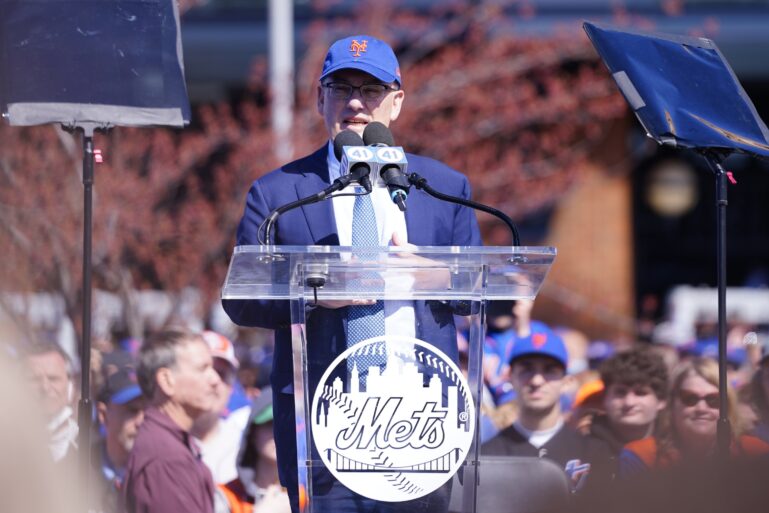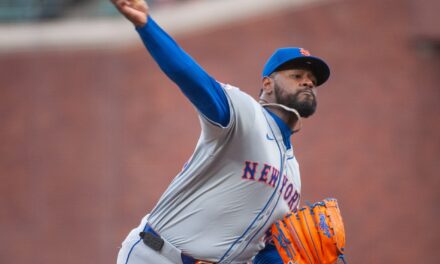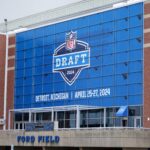
Gregory Fisher-USA TODAY Sports
Based on the aggressiveness displayed by the New York Mets front office this offseason, it can be concluded that Steve Cohen is not intimidated by the increase in luxury tax payments that he will have to make.
To contextualize what is facetiously called the ‘Steve Cohen Tax,’ other owners in the MLB quickly took notice of Steve Cohen’s abundant spending habits and decided to establish an additional tier of fees for exceeding a payroll threshold of $60M over the tier one threshold. In 2022, the Mets paid this fee upon adding the contracts of Chris Bassitt and Max Scherzer among others. Their payroll for 2o22 was a hefty $286.5M, which was a franchise record. Consequently, this shows that the Mets are not afraid to establish themselves as big spenders in an effort to take the team to the next level.
Currently, the Mets seem destined to be paying this fee again. As of today, their payroll is characterized by about $207M in guaranteed contracts. This includes the new additions of Kodai Senga, Justin Verlander, Jose Quintana, David Robertson, Brooks Raley, as well as the return of Brandon Nimmo. For the purposes of the ‘Steve Cohen Tax,’ the average annual value (AAV) is used in the calculation of the payroll that determines whether they exceed the threshold. As a result, this puts Nimmo’s lengthy deal into perspective as the AAV is $20.25M, which is the important number that will go into the calculation of their payroll. On the other hand, Verlander’s shorter deal comes with a higher AAV of $43.33M, which will quickly increase their payroll dangerously close to that threshold.
Additionally, the Mets are looking at $13.075M in guaranteed contracts from option years, which includes the likes of Carlos Carrasco, Daniel Vogelbach, and John Curtiss. Since the buyout was not utilized for Vogelbach or Carrasco, the cost of the respective buyouts is removed from the payroll. As a result, the Mets saved $3.2M in AAV impact between the two aforementioned players.
Moving on to the two other categories that contribute to payroll, the Mets are responsible for $49.726M in the guaranteed contracts with deferrals of Francisco Lindor and Edwin Díaz and $20.25M in the dead money of Robinson Canó. Next, the Mets are responsible for an additional estimate of $35M between arbitration contracts and renewable minimum contracts between the MLB and MiLB. Finally, they also need to account for other MLB luxury tax requirements such as the Player Benefits Pool and Pre-Arbitration Bonus Pools. These add up to about $19M, which projects the Mets current payroll for 2023 at approximately $341M along with a hefty luxury tax payment.
While many owners would look at this situation and try to cut costs wherever they can, it seems that Cohen wants to do the exact opposite. Most recently, the Mets agreed to a five-year contract with the aforementioned standout Japanese pitcher Kodai Senga.
That said, there are still improvements that can be made. For instance, the Mets would highly benefit from retaining Adam Ottavino, who was a consistent and reliable arm in their 2022 bullpen. Beyond that, there are a number of possibilities through free agency or the trade market that the Mets can explore in order to make upgrades at any area. Based on the aggressiveness that the team has displayed, it is evident that Mets general manager Billy Eppler has the approval of Cohen to spend all the money he needs to put the team in the best position to win.
Predictably, Cohen’s reckless spending has received some criticism from his fellow MLB owners. According to Ken Rosenthal of The Athletic, other MLB owners feel threatened by the amount of money Cohen is investing into his team. On the contrary, Rosenthal argues that the MLB needs more owners like Cohen as the fans will feel more inclined to support their team if they notice that their owner is serious about putting out a winning product. While the success hasn’t exactly come yet for the Mets, fans are aware that Cohen is making every effort to change that.















